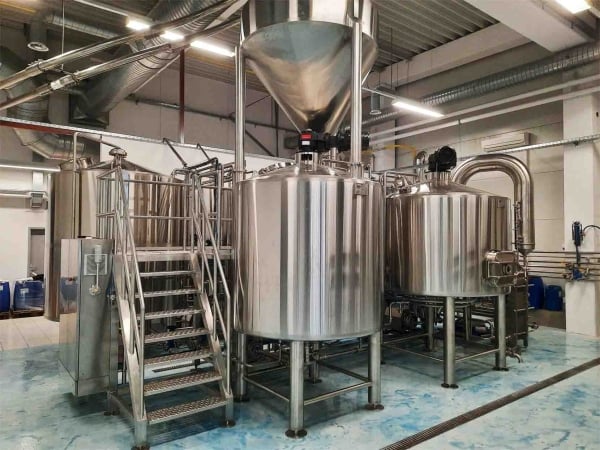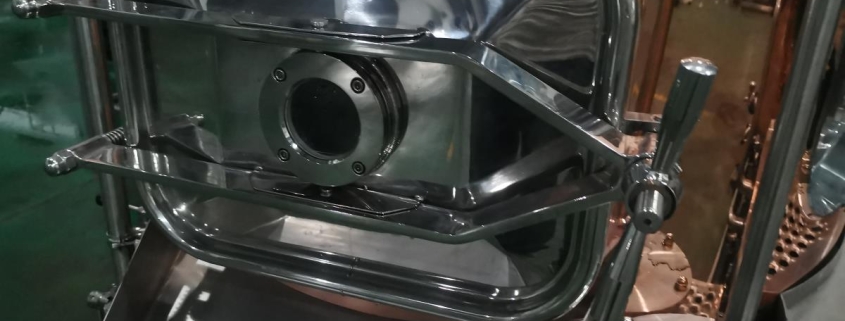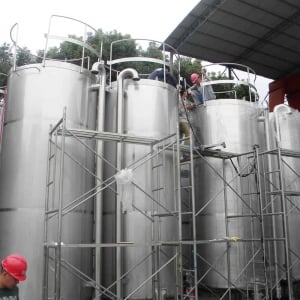Stainless Steel Brewing Equipment
Home and craft brewing has grown exponentially in popularity over the last decade. As interest has expanded, so too has the market for specialized brewing tools and systems. Stainless steel has become the predominant material used to construct many pieces of stainless steel brewing equipment.
stainless steel brewing equipment offers superior durability, corrosion resistance, ease of maintenance and cleaning, recyclability, and aesthetic appeal over plastic and glass alternatives. It is also better for precise temperature control. These beneficial properties have made stainless steel the go-to substrate for numerous components of both commercial and home breweries.
Types of Stainless Steel Brewing Equipment
There are many different types of equipment used in beer production that are commonly made of stainless steel:
| Equipment Type | Description and Key Functions |
|---|---|
| Brew Kettles | The brew kettle is one of the most essential vessels that comes into contact with the sweet wort. It must be made of high quality stainless steel alloys to prevent corrosion and oxygen pickup. |
| Mash Tuns | Mash tuns are used for the all-important mashing process to extract fermentable sugars from the milled grains. This also requires durable and inert construction to prevent leaching of flavors into the wort. |
| Fermenters | Stainless fermenters come in many sizes to accommodate different batch requirements. They allow oxygen-free storage of beer during primary and secondary fermentation. |
| Brite Tanks | Brite tanks are pressurized vessels used for clarifying, carbonating and storing the finished beer ready for packaging and dispensing. Stainless construction prevents oxygen ingress. |
| Piping | All pipes, valves, pumps and fittings associated with transferring hot wort and cold beer must be stainless steel to prevent corrosion and contamination. |
| Kegs | Stainless steel kegs maintain pressure, don’t impart flavors, and have better thermal characteristics compared to plastic kegs. They are robust and reusable many times over. |
| Control Panels | Measurement and control components like thermometers, pressure gauges, switches and PID controllers mounted in stainless panels. |
Additional auxiliary equipment like bottle fillers, canners, filters, heat exchangers, boilers, chillers, clean-in-place systems, air compressors, cooling jackets etc. commonly utilize stainless steel as well.

Stainless Steel Brewing Equipment Suppliers
There are many equipment fabricators that offer standard and customized stainless steel brew systems and components for breweries of any size:
| Supplier Name | Place of Origin | Price Range |
|---|---|---|
| JV Northwest | USA | $1,500 – $100,000 |
| Spike Brewing | USA | $500 – $20,000 |
| Ss Brewtech | USA | $350 – $30,000 |
| Blichmann Engineering | USA | $150 – $1,500 |
| Mile Hi | USA | $250 – $15,000 |
In addition to North American companies, there are lots of manufacturers in China and India catering to very small nano breweries all the way up to large industrial scale production volumes. These tend to have lower pricing but quality control varies vastly among different vendors. Reaching out to existing clients for reviews is highly recommended before ordering.
Factors to Consider When Choosing a Brewery Equipment Supplier
Purchasing stainless equipment represents a major investment for any brewery. Care should be taken to assess suppliers based on following criteria:
| Consideration | Explanation |
|---|---|
| Product Quality | High grades of 304 and 316 stainless steel that are free of contaminants and imperfections. |
| Manufacturing Standards | Properties like uniform wall thickness and Polish/finish to enable ease of cleaning and prevent bacterial adhesion. |
| Certifications | ASME-stamped vessels that are CRN and NSF approved based on UL/ETL testing standards. |
| Reliability Reputation | Check references and read reviews to ensure reliable operation for years without failure or significant maintenance. |
| Customization Offerings | Ability to tailor standard products for specialized layouts and non-standard batch sizes. |
| Cost Considerations | Reasonable pricing that aligns with product quality and features. |
| Lead Times | Large-scale commercial systems often require long planning and fabrication timelines. |
| Payment Flexibility | Many vendors offer progress payment schedules for expensive and custom equipment purchases. |
| Installation Support | Some provide guidance or even handle full-service installation as part of the equipment cost. |
| Post-Purchase Support | Warranties and continued maintenance/service contracts available. |
Taking the time upfront to thoroughly evaluate and test the offerings of different vendors will prevent major problems or disappointments when your system is operational.
Comparison of Pros and Cons of Stainless vs Other Materials
While stainless steel is unmatched is many performance aspects, it also carries some inherent drawbacks:
| Parameter | Stainless Steel | Alternative Materials |
|---|---|---|
| Durability | Extremely durable for high pressure, temperature and corrosion resistance | Plastics and glass wear out sooner |
| Thermal Properties | Excellent conductivity for precise temp control | Plastics insulate more causing slow heating/cooling |
| Imparted Flavors | Imparts no flavors or odors to beer | Some transfer of plastic tastes may occur |
| Cleaning/Sanitation | Easy to thoroughly clean and sanitize | Plastic can scratch and harbor bacteria |
| Aesthetic Quality | High quality polished look | Lower grade appearance |
| Upfront Costs | Very expensive initial investment | Cheaper vessels possible with plastic/glass |
| Longevity Value | Systems often reused for decades | Frequent replacements needed |
| Resale Value | Highest residual value after upgrades | Much harder to resell used plastic |
Choosing the Right Stainless System Setup
Ideally you should plan out your entire brewery layout including equipment sizes, floor space, heights, utility connections etc. This minimized chances of components not fitting or suboptimal arrangements.
Key considerations for laying out your stainless brew house include:
Batch Size and Production Volume
- Match all equipment capacities for your target batch volume and overall output needs
- Factor in space for expansion later
Brewing Process Workflow
- Optimize flow between brewhouse vessels, storage tanks and packaging stations
- Streamline movements for operational efficiency
Utility Connections
- Convenient access to water, drains, steam, gases and electricity
- Simplifies new installs and future modification hooks
Height Constraints
- Account for overhead clearance limits in building
- Allow headspace for filling fermenters and brite tanks
Floor Loading Limits
- Consider extremely heavy system and full batch weights
- Reinforce/brace structures to handle dynamic loads
Maintenance Accessibility
- Ensure adequate space for inspection, cleaning, repairs
- Improve safety and reduce confinement risks
Careful planning of the above parameters minimizes costly changes down the road and keeps brewers happy!
FAQ
Q: What grade of stainless steel is best for brewing equipment?
A: Most fabricators use either 304 or 316 stainless for the contact surfaces. 316 has a higher chromium content adding extra corrosion resistance beneficial for salty environments if you’re located near the ocean.
Q: Does all stainless equipment get passivated and electropolished?
A: Passivation removes free iron from welds while electropolishing smoothes the steel for cleanliness. Not all vendors include these steps by default but they are recommended for professional grade systems. Ask specifically about these finishes.
Q: What is the lead time for custom stainless equipment orders?
A: Lead times vary greatly across vendors and scale with system complexity. For reference 12 – 26 weeks is typical for intricate commercial brewhouses. Simpler homebrew gear may ship in 4 – 8 weeks. Verify timelines before ordering.
Q: Is stainless steel equipment difficult to maintain?
A: The advantage of stainless construction is low maintenance requirements. Beyond routine cleaning/sanitizing, just periodic inspection for any corrosion or weld cracks is needed to sustain performance. Proper care yields decades of reliable service.
Q: Does stainless equipment ever need to be replaced?
A: With appropriate maintenance stainless steel systems should last upwards of 30 – 50 years in commercial applications. Upgrades are done more for expansion or by brewers wanting newer technology long before replacement is necessitated by wear.













